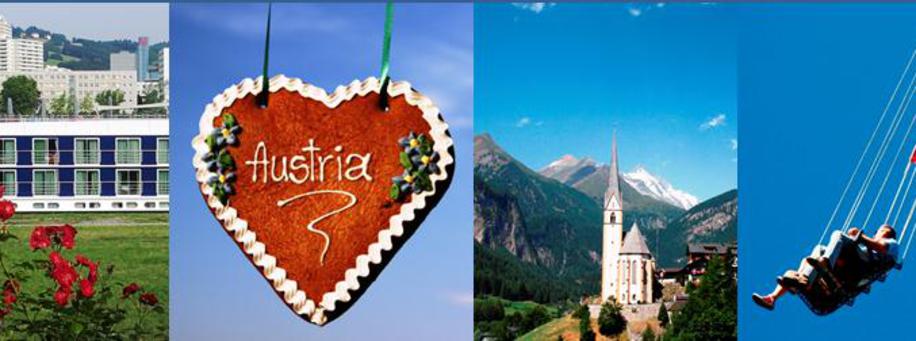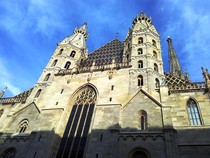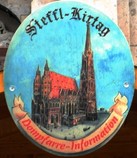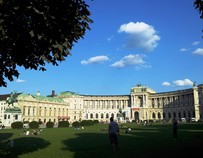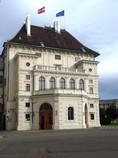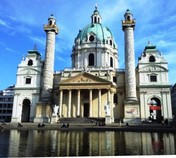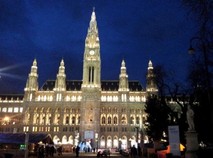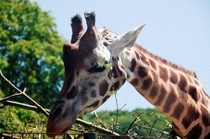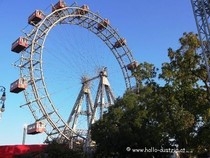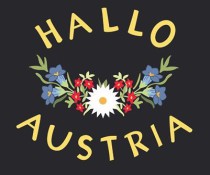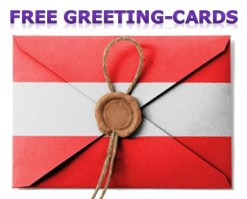Historical City
Vienna has always been a center of events. The romans founded Vindobona; the Emporers made their residences in Vienna and today international organizations are headquartered in Vienna.
What remains of the Habsburg Empire (ended in 1918) are the many imperial buildings which decorate mainly the first District (downtown) and are organized around the Ring, which ist the street encircling the city-center.
Winding old streets elude to the atmosphere of Mozart, old street names such as Baker Street (Bäckerstraße) or High market (Hoher Markt) recall their use during the Middle Ages.
St. Stephen’s Cathedral
In the center of Vienna is the St. Stephen's Cathedral, the most famous cathedral in Austria (U-Bahn station Stephansplatz) and is dedicated to Saint Stephen. It was built in the 13th Century as a Romanesque church, some elements such as the great gate and towers remain from this period. Today, the St. Stephen's Cathedral appears as a late-Gothic cathedral. During World War II, it was largely destroyed and then rebuilt.
Important sights in the cathedral are the Pilgram pulpit (probably with a self-portrait of the architect Pilgram), the "Gothic Wiener Neustadt altarpiece" from the year 1447, and the ornate interior and exterior pillars.
The opening times are Monday-Saturday 06:00 - 22:00 h, on Sundays from 07:00 - 22:00 h Find out more on the official website of Stefan's Cathedral.
‚Hofburg’: The Imperial Palace
For 600 years, until 1918, the Hofburg was the political and social center of the monarchy, and today still recalls the past glory. The entire facility covers more than 240,000 sq. meters, a small portion of the medieval building is still standing.
There are several museums in the Hofburg Palace. Housed there are: the Baroque State Hall of the National Library, the Silver Collection, the Spanish Riding School, the Imperial Apartments and the "Sisi Museum".
Get your ticket for the Spanish Riding School.
The page gives an overview of Imperial Austria Imperial Residences across Austria.
The Austrian Federal President today also resides in the Hofburg.
St. Charles’s Church
Emperor Karl VI vowed during the plague epidemic of 1713 to build a church in honor of Charles Borromeo, once the plague was over. The architect Fischer von Erlach, created the 72 m high St. Charles’s Church, the largest Baroque in Vienna. It’s most striking features are the neo-classical dome and the two triumphal columns, which are reconstructions of the Trajan Column in Rome and depict the scenes from the life of the saints. Worth seeing are the frescoes in the cupola, the high altar and side altars.
City Hall
The "new" Rathaus (city hall) was erected in the second in the Half of the 19th Century, at the same time as the building of the ring road by Emperor Franz Joseph I. The town hall was built along the lines of the Brussels Town Hall and is the seat of city government.
The City Hall can be visited with a guide, a virtual tour can be done here>>>
The Town Hall square between City Hall and the Burg Theater is used in summer for openair theater performances, operas and concerts. During winter is it used first for the Vienna’s Christmas Market and after Christmas, it is used to host an ice skating rink the Vienna Ice Dream.
Schönbrunn
Schönbrunn palace was originally a hunting lodge and later became the final summer residence of the imperial family. Really, the castle was first utilized by Maria Theresia, who made it the center of court life and she is also responsible for the palace's rococo style. Schönbrunn is included in UNESCO's world heritage list.
The rooms are open to all year. In the winter, a christmas market is held in the courtyard.
In the parc is also the Gloriette which is now utilized as a caffee house.
Schönbrunn Zoo
In 1779 the court opened the zoo to the public. During the 19th Century visitors were already able to admire elephants and camels in the
zoo. One particularly unfortunate circumstance at the zoo happened with the first giraffe which arrived in 1828 as gift of the Egyptian viceroy
to Vienna. Due to innappropriate treatment, the giraffe died after only 10 months. The next giraffe to be seen in Schönbrunn was not for another
23 years.
All about the zoo. http://www.zoovienna.at/
Viennese Prater and the Giant Ferris Wheel
The Viennese Prater is simultaneously a recreation area for joggers, cyclists and other sports enthusiasts and
also an amusement park for adults and children with many attractions such as roller coaster and pony rides.
Map of the Prater
The biggest attraction in the Prater is the giant Ferris wheel. It was built in
1897 to mark the 50th Jubilee of Emperor Franz Joseph I. The highest point of the ferris wheel is about 65 m above the ground, it spins at a speed of 2.7 km / h.
